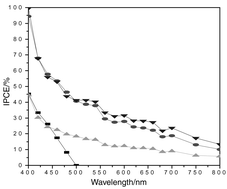Abstract
Photoelectrochemical electrodes have been prepared by sequential deposition of quantum sized PbS, CdS and ZnS particles on TiO2 nanocrystalline films. Their photoelectrochemical properties have been studied in a two-electrode system which conforms more closely to practical conditions. The results show that the ternary


 Please wait while we load your content...
Please wait while we load your content...